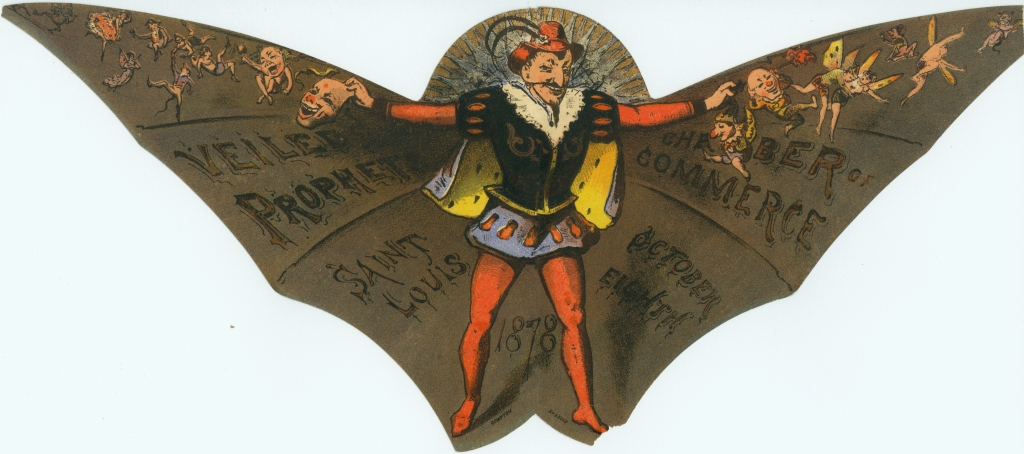
Organizers of the Order of the Veiled Prophet in 1878, led by brothers Charles and Alonzo Slayback, sought to lift the city’s profile as a growing, affluent commercial hub. But, early on, the all-white, all-male Veiled Prophet promoted racist tropes, which were unapologetically echoed by all the leading newspapers of St. Louis.
One theme, which appeared several times in the organization’s first four decades, depicted “carefree” African Americans, gorging on watermelons. “One of the best comic floats in the procession,” the Globe-Democrat said of the 1890 display.
In The Atlantic in 2014, historian William R. Black explained how watermelons emerged as a politically potent symbol used by whites — and it’s worth revisiting to better understand the racist underpinnings of the Veiled Prophet organization.
_______
What follows are excerpts from a small sampling of newspaper reporting on Veiled Prophet parades. The quotes are verbatim — and, of course, offensive.
“A darky eating a watermelon is a very realistic picture.” — St. Louis Post-Dispatch, Oct. 5, 1886
“One of the best comic floats in the procession will bear W as its key letter. Its distinguishing feature is a huge Watermelon in the background with a generous section taken out. A number of American citizens of ‘African descent’ are discovered sitting in the breach and gormandizing on its luscious interior, while another is ascending on a ladder.” — St. Louis Globe-Democrat, Oct. 5, 1890

“An old-fashioned negro cabin occupies the center of the float and in the rear is seen a monstrous alligator swallowing a fat pickaninny; fishermen are just coming from the stream with an enormous catfish, and their gay, careless companions are dancing a buck dance to the sound of a banjo in the hands of a snowy-haired African.” — St. Louis Republic, Oct. 5, 1902
“The strains of ‘Dixie’ will precede an enormous slice of ‘that watermelon hangin’ on de vine,’ with the appropriate group of happy personalities.” — St. Louis Globe-Democrat, Sept. 12, 1912

“Another innovation was a wheelbarrow parade. In front of each float a negro walked, pushing a light wheelbarrow, on which was a standard bearing in illuminated letters the name of the succeeding float.” — St. Louis Globe-Democrat, Oct. 7, 1914
“The watermelon is the theme of the eighth float, with dark-skinned epicures as the passengers.” — St. Louis Post-Dispatch, Oct. 3, 1920

(Originally published June 18, 2021)